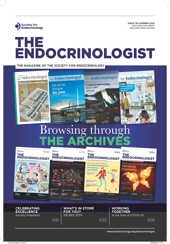FIRST PUBLISHED IN ISSUE 109 (2013)
Have you ever tried kite surfing? You have to marvel at this improbable activity and the extraordinary skill, style and panache displayed by the riders. Those attending ENDO 2013 in San Francisco will have been treated to the sight of swarms of the multicoloured kites highlighted by the late evening sun, set against the iconic Golden Gate Bridge silhouetted in the distance.
Every second, a series of extraordinary skills is coalesced in order to execute this mind-boggling pastime: skimming across the water whilst balancing on a plank that has no buoyancy; controlling a kite that generates sufficient force to be capable of catapulting the operator tens of metres into the air and dislocating all manner of joints; being hyperaware of all opportunities to refine speed and poise; responding to shifting wind directions; and avoiding obstacles, including other water traffic … and the occasional shark!
How would you go about acquiring this alien skill? You might gain some insight by watching some YouTube videos and spending evenings researching kit and technique. However, ultimately, you’d have to take the plunge: sign up for some lessons, and, importantly, get wet. Initial attempts would be challenging, scary and frustrating, but with perseverance, correct guidance and, most importantly, dedicated practice and application, you would eventually be an expert.
In the face of limited availability of time, if you really concentrated on technique on every occasion that you went out on the board, the level of your mastery would increase greatly, and more quickly. Back this up with theory of the technique, and the results would be even quicker. With the right exposure and luck you might even get a sponsorship deal, join the world competition circuit and be chosen to grace a Red Bull advert – whilst for most people simply participating in the sport would be an excellent and rewarding end in itself.
You will have recognised this thinly veiled analogy to medical specialist training. Expert clinical endocrinologists are the kite surfers of the medical world, integrating reams of data in a careful and timely manner with the necessary great attention to detail, and using knowledge and skilful clinical acumen that other specialties frequently wonder at.
Reaching such status is, however, under threat. Currently, a major source of frustration is the detrimental effect on endocrine training caused by the demands of the acute medical take and continuing care. The solution to this very important problem lies outside the control of endocrinology, as it can only be solved by multi-specialty re-engagement with general internal medicine, so sharing the burden that all too often falls disproportionately on our trainees. This issue is high on the agendas of the committees of the Society for Endocrinology and Royal Colleges, but will take time to resolve.
The oft-quoted 10,000 hours needed to master any discipline is relevant, with the distinction between competence and mastery being key. Early on there is a steep learning curve, whilst the latter part is finessing. It’s a long time: one that for many will extend beyond clinical specialist training. Of course, not all experience is equal, and some areas are easier to master than others.
How then, today, does one maximise the opportunities to learn and gain experience in the current time-limited training environment? One answer is the postgraduate course. For example, the Society for Endocrinology runs the excellent and highly rated Clinical Update, an annual 3-day residential course that covers the training curriculum over 3 years, and where participants have the opportunity to closely interact with, learn from, and challenge experts in their field: experts who are so motivated to teach and impart knowledge and transfer skills that they give their time freely and generously in what are always hectic schedules.
Courses are important, but are not the complete solution. There is one very simple, free, and time-efficient strategy that can be used to maximise the experience of clinical training, but one that has, perhaps, become less commonly practised – learning from each and every patient. By this I do not mean to invoke some trite soundbite that might appear in some educational rubric, nor a series of acronyms beloved of the Annual Review of Competence Progression (ARCP) process, such as Case-Based Discussions (CBD), mini-Clinical Evaluation Exercises (miniCEX) and Direct Observation of Procedural Skills (DOPS).
No, I am simply stating that, for every single patient that one has not seen personally before, the set of notes (especially if thick) should be opened at page one, and read … to completion. This takes some time but always yields results, and with practice the skill becomes quicker. Unanswered issues (e.g. imaging, biochemistry and pathology) are then chased up and a complete picture generated. It is surprising how often this is not done, and then how rapidly answers to a clinical problem appear when it is. Add in background reading for a given condition, and, like the emerging kite surfer dedicated to practice, mastery grows organically.
John Newell-Price, Professor of Endocrinology and Honorary Consultant Physician, University of Sheffield






